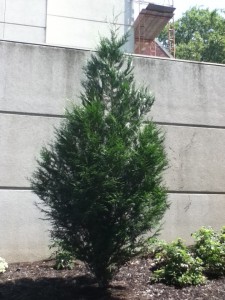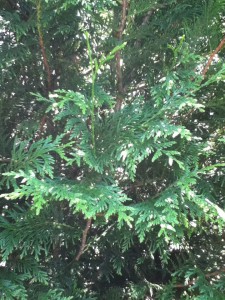Genus: Cornus
Family: Cornaceae
What people generally think of as a dogwood “flower” isn’t actually a flower, but rather a collection of large outer scales called “bracts.” The true flowers are very small and are clustered in a small group at the center of the arrangement. The three most common types of dogwoods bloom at different times of the year, so planting a mixture of the trees gives us an extended display of color on the campus.
Cornelian Cherry
Scientific name: Cornus mas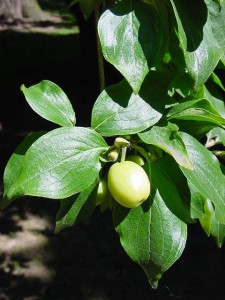
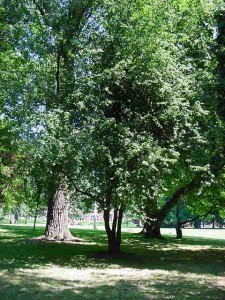 A broad-spreading small tree with attractive yellow flowers in late winter or early spring, it is a native of Eurasia. It bears large cherry-like fruits that because of the high pectin content make good preserves. It will grow to approximately 20 feet tall. It has been cultivated since ancient times for its fruit, particularly in the Balkans.
A broad-spreading small tree with attractive yellow flowers in late winter or early spring, it is a native of Eurasia. It bears large cherry-like fruits that because of the high pectin content make good preserves. It will grow to approximately 20 feet tall. It has been cultivated since ancient times for its fruit, particularly in the Balkans.
View tree page and map.Eastern Dogwood
Scientific name: Cornus florida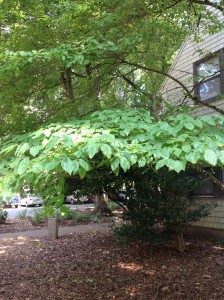 Native to the eastern United States, it has two main forms: one with white and one with pink "flowers" (really bracts). It is often wider than high, commonly reaching 25 feet. The flat planes of bracts before the leaves appear make this dogwood one of our showiest April and May flowering trees. Summer foliage is a good lustrous green, turning to an excellent red or plum fall color.
Native to the eastern United States, it has two main forms: one with white and one with pink "flowers" (really bracts). It is often wider than high, commonly reaching 25 feet. The flat planes of bracts before the leaves appear make this dogwood one of our showiest April and May flowering trees. Summer foliage is a good lustrous green, turning to an excellent red or plum fall color.
View tree page and map.Eddie’s White Wonder Dogwood
Scientific name: CornusKousa Dogwood
Scientific name: Cornus kousa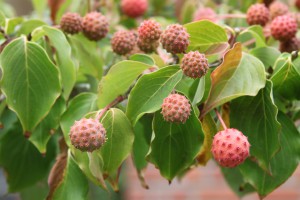
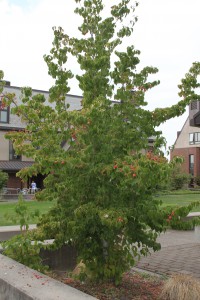 The Kousa dogwood (a native of Japan and Korea) differs from the Eastern Flowering Dogwood in its later flowers (in June) with pointed bracts that stand above the foliage, and in its rounded and showy fruit clusters. The tree is about the same size as the American species and makes a nice garden tree.
Cornus kousa var. chinensis
"Chinese Dogwood"
This variety comes from China and has larger leaves.
The Kousa dogwood (a native of Japan and Korea) differs from the Eastern Flowering Dogwood in its later flowers (in June) with pointed bracts that stand above the foliage, and in its rounded and showy fruit clusters. The tree is about the same size as the American species and makes a nice garden tree.
Cornus kousa var. chinensis
"Chinese Dogwood"
This variety comes from China and has larger leaves.
View tree page and map.Pacific Dogwood
Scientific name: Cornus nuttallii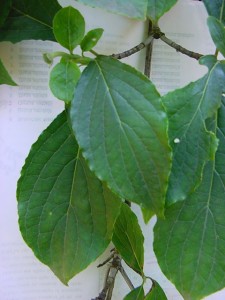
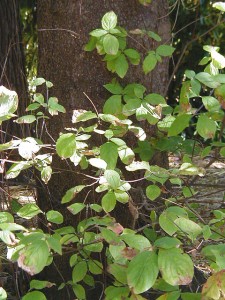 This is the largest of the native dogwoods and usually the first to bloom. It can grow to more than 70 feet in height and it does well in moist climates. This is a very beautiful native dogwood with large bracts and good fall color. We are losing this tree in the Northwest from a fungal disease called anthracnose.
This is the largest of the native dogwoods and usually the first to bloom. It can grow to more than 70 feet in height and it does well in moist climates. This is a very beautiful native dogwood with large bracts and good fall color. We are losing this tree in the Northwest from a fungal disease called anthracnose.
View tree page and map.Pagoda Dogwood
Scientific name: Cornus alternifolia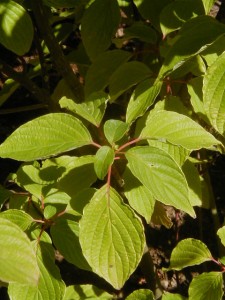
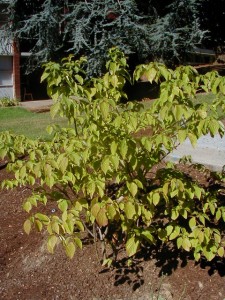 This dogwood is native to the eastern United States, where it is often found in thickets near streams. It can grow to be 20 feet tall and it produces small, dark blue fruit that look like berries.
This dogwood is native to the eastern United States, where it is often found in thickets near streams. It can grow to be 20 feet tall and it produces small, dark blue fruit that look like berries.
View tree page and map.
